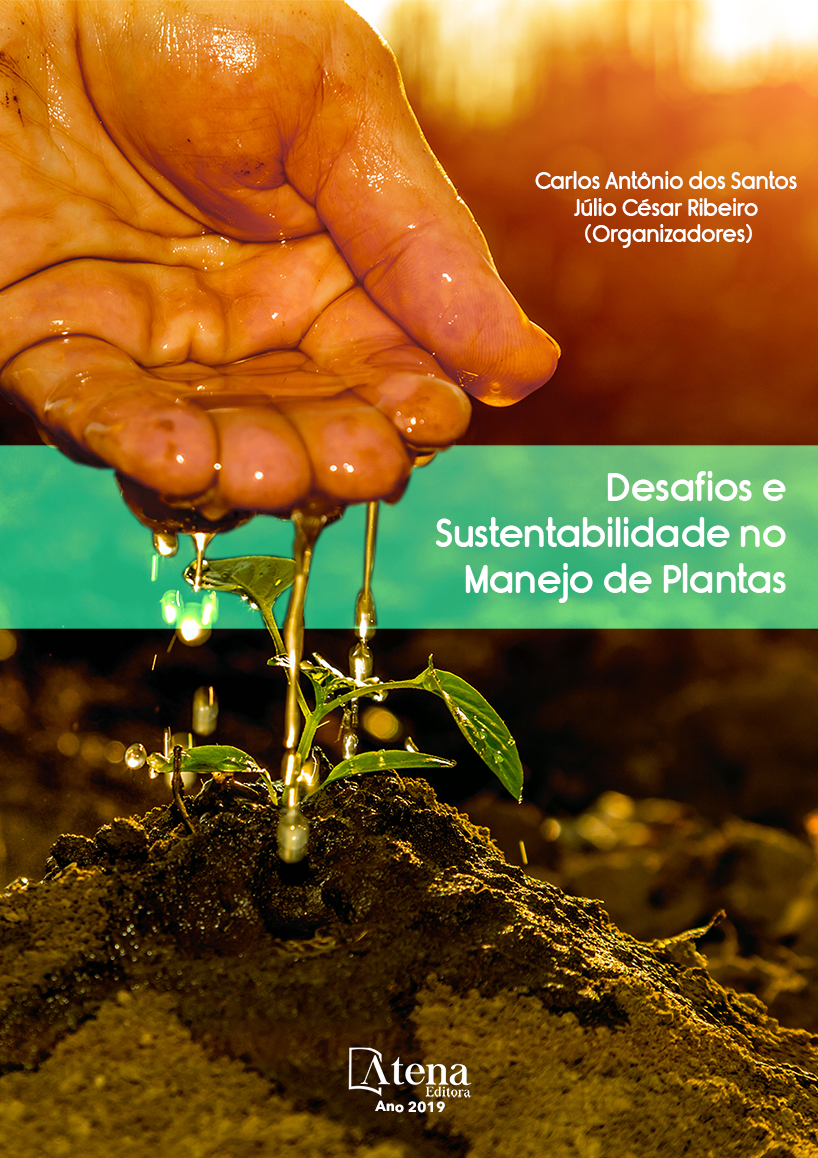
EFEITO RESIDUAL DE HERBICIDAS PRÉ-EMERGENTES EM MILHO CULTIVADO EM SUCESSÃO A SOJA
Herbicidas pré-emergentes são
ferramentas importantes para o controle de
plantas daninhas, pois apresentam efeito
residual longo ampliando o período de controle
dos alvos. No entanto, quando o período
residual excede o ciclo da cultura, os herbicidas
podem ocasionar toxicidade aos cultivos
em sucessão, fenômeno conhecido como
carryover. O objetivo deste trabalho foi avaliar
o efeito residual dos herbicidas flumioxazim e
metribuzim na cultura do milho cultivada em
sucessão a soja. O experimento foi conduzido
em casa de vegetação, em blocos casualizados,
com quatro repetições. As doses utilizadas para
cada herbicida foram 1/2D, D, D+1/2, 2D. A dose
recomendada (D) foi 50 e 480 g ia ha-1 para
flumioxazim e metribuzim, respectivamente.
Após a aplicação dos herbicidas, a soja foi
cultivada por 120 dias e em seguida semeou-se
milho. Foram avaliadas nas plantas de milho a
massa seca de parte aérea (MSPA) e de raiz
(MSR) e fluorescência transiente da clorofila a
aos 15 e 60 (DAE). Os dados foram submetidos
a análise de variância e as médias comparadas
pelo teste Tukey (p≤0,05). Não se observou
redução da MSPA e MSR em função do
aumento da dose para ambos os herbicidas. Em
relação a fluorescência transiente da clorofila a,
verificou-se que os herbicidas não influenciaram
negativamente nos índices de performance
fotossintética PIABS e PITOTAL. Observou-se
aumento no PIABS e PITOTAL de plantas de milho
cultivadas em solo sob aplicação de metribuzim
(15DAE) e flumioxazim (60DAE). Os herbicidas
flumioxazim e metribuzim, quando aplicados em
pré-emergência da cultura da soja, não resultam
em injúrias no milho cultivado em sucessão.
EFEITO RESIDUAL DE HERBICIDAS PRÉ-EMERGENTES EM MILHO CULTIVADO EM SUCESSÃO A SOJA
-
DOI: 10.22533/at.ed.0851918065
-
Palavras-chave: Zea mays, pré emergência, carryover,
-
Keywords: Zea mays, pre-emergence, carryover
-
Abstract:
Pre-emergence herbicides are important tools for weed control, since
they have a long residual effect extending the period of control of the targets. However,
when the residual period exceeds the crop cycle, herbicides can cause crop toxicity
in succession, a phenomenon known as carryover. The objective of this work was to
evaluate the residual effect of the herbicides flumioxazim and metribuzim on corn crop
grown in soybean succession. The experiment was conducted in a greenhouse, in
randomized blocks, with four replications. The doses used for each herbicide were 1/2D,
D, D+1/2, 2D. The recommended dose (D) was 50 and 480 g ai ha-1 for flumioxazim
and metribuzim, respectively. After application of the herbicides, the soybean was
cultivated for 120 days and then corn was sown. The dry mass of aerial part (SDR)
and root (RDM) and chlorophyll a transient fluorescence at 15 and 60 (DAE) were
evaluated in maize plants. The data were submitted to analysis of variance and the
means were compared by the Tukey test (p≤0.05). No reduction of SDM and RDM
was observed as a function of dose increase for both herbicides. In relation to transient
fluorescence of chlorophyll a, herbicides were found to have no negative influence
on PIABS and PITOTAL photosynthetic performance indices. It was observed an increase
in PIABS and PITOTAL of maize plants cultivated in soil under application of metribuzim
(15DAE) and flumioxazim (60DAE). The herbicides flumioxazim and metribuzim, when
applied in pre-emergence of the soybean crop, do not result in injuries to maize grown
in succession.
-
Número de páginas: 15
- Samia Rayara de Sousa Ribeiro
- Cristiano Viana André
- Felipe Sant’Ana Marinho
- Mariana Araújo Alves Gomes de Souza
- Monique Macedo Alves
- Camila Ferreira de Pinho
- Gledson Soares de Carvalho


